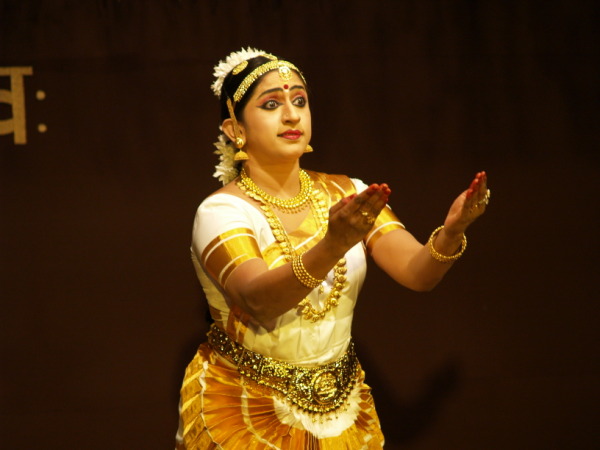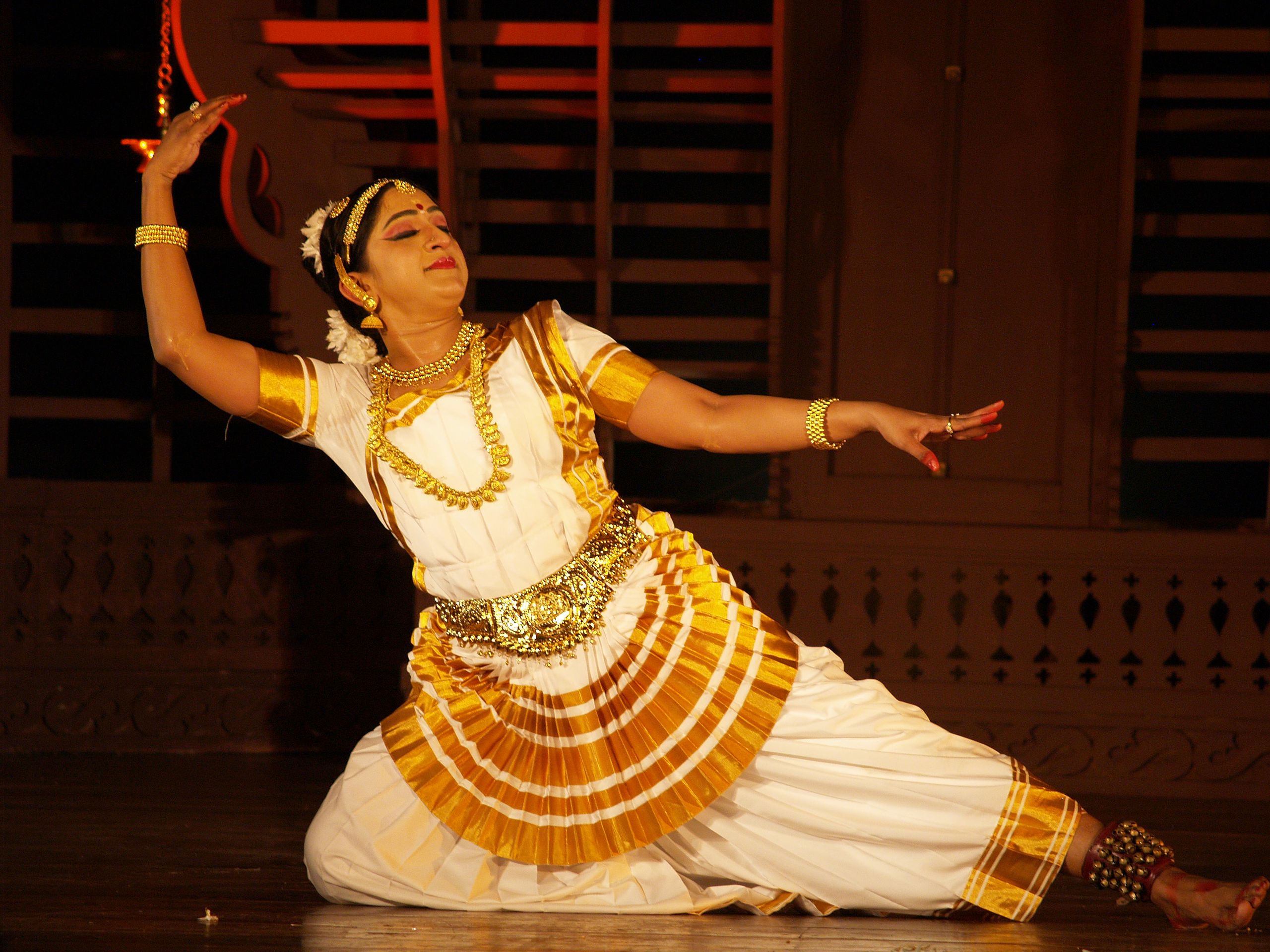
This classical dance form from the state of Kerala, India is characterized by very soft, flowing and gentle movements in which one can see uninterrupted circular and semicircular continuous movements and it gives significance to facial expressions. This classical dance form is the only dance form of India which follows the Eka Aharya, Single Costume, White or off-white with golden border and golden jewelry. This grandiose attire gives a spell bounding impact to another uniqueness of this dance form, its significance of facia expression.
Smitha Rajan, follows this Classical Mohiniyattam in her practice on stage and with her students. Smitha’s utmost adherence to the traditional values of this dance form which her Guru and Grandmother, “The Mother of Mohiniyattam”, Guru Kalamandalam Kallyanikutty Amma (Give a link to Guru Kallyanikutty Amma’s Page) had stood for had placed her as The flagship Performer of her Guru’s Tradition.
Like all the other classical dance forms the origin of Mohiniyattam was also from the temples. The original name of Mohiniyattam was “Thevadichiyattom” which means the “dance of the maidens of the Lord”- Theva-God, Adi-feet, Achchi-wife, thus “Thevadichi” means “the wife of Lord”. “Mohini” means “beautiful lady” and “attam” means “dance”. This change in name is similar to that of Sadir turning into Bharatanatyam. Literally, “Mohiniyattam” means, “dance by a beautiful lady”. Extremely soft, graceful and gentle movements characterize Mohiniyattam with emphasis on “abhinaya” or facial expressions.

Mohiniyattam is deeply indebted to the constructive contributions of the three Pillars or Thri-Moorthis, namely Sri Swathithirunal, Sri Vallathol (a great poet and founder of Kerala Kalamandalam) and Smt. Kalamandalam Kalayanikutty Amma (who is considered the mother of Mohiniyattam as we see it today) for its revival. Kalyanikutty Amma cleared the mythical mystery behind the name of this dance form and gave it the most convincing explanation based on truth, social and historical evolution, interpreting Mohiniyattam as the dance of a beautiful lady rather than that of a mythical enchantress from heaven.
